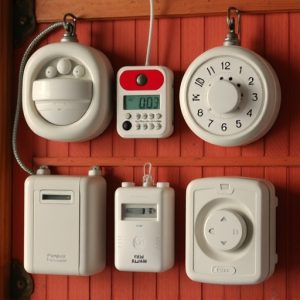Panic Alarms for Lone Workers: Sound, Distance, & Effective Training
Lone workers face unique risks that require specialized safety measures. Panic alarm systems with po…….
Lone workers face unique risks that require specialized safety measures. Panic alarm systems with powerful panic alarm sound and long carry distance are crucial tools for distress communication. These alarms enable quick assistance, even in remote or noisy areas, potentially saving lives by reducing response times. Organizations should prioritize implementing these systems, combining advanced technology with worker training to ensure effective emergency response.
In today’s fast-paced world, many workers operate alone, facing potential risks with limited support. This has prompted the need for effective safety alert systems, particularly panic alarm solutions. With lone worker safety a growing concern, understanding and implementing the right technology can make all the difference.
This article explores the critical role of panic alarms, focusing on key features such as sound quality and carry distance, along with practical steps for successful implementation and user training.
- Understanding the Risks of Lone Workers
- The Role of Panic Alarm Systems
- Key Features to Consider: Sound and Carry Distance
- Implementing and Training for Effective Use
Understanding the Risks of Lone Workers
Lone workers, by definition, operate without immediate supervision or support from colleagues. This isolation can lead to unique and heightened risks that are often overlooked in traditional workplace safety discussions. Without a direct line of communication with others, a worker in distress may not be able to promptly seek assistance in case of an emergency or accident. This is where safety alert systems come into play as vital tools for protecting these individuals.
One key component of such systems is the panic alarm sound, designed to immediately grab attention and signal a need for help. The carry distance of these alarms is equally important; they must be audible enough to alert bystanders or fellow workers within a reasonable range, ensuring swift response times. By understanding the risks associated with lone workers, organizations can implement effective safety measures that could prove life-saving in critical situations.
The Role of Panic Alarm Systems
Panic alarm systems play a critical role in ensuring the safety of lone workers by providing a rapid means of communication in emergency situations. When activated, these alarms emit a distinct and powerful sound that can be heard over significant distances, even in noisy environments or remote locations. This loud signal serves as a universal alert, notifying colleagues, supervisors, or emergency services of the worker’s distress.
The carry distance of a panic alarm is a key consideration, ensuring its effectiveness in large work areas or outdoor settings. Advanced systems employ high-decibel sounds and directionality to maximize range and accuracy, allowing workers to signal for help without requiring physical proximity to their colleagues. This feature can be life-saving, especially in cases where the worker is injured, disoriented, or unable to move immediately.
Key Features to Consider: Sound and Carry Distance
When evaluating safety alert systems for lone workers, one crucial feature to consider is the sound and carry distance of the panic alarm. The ability to emit a loud, distinct signal ensures that help can be summoned quickly in case of an emergency. A powerful alarm with a long carry distance is essential to guarantee that the cry for assistance reaches nearby people or response services, even in large or noisy environments.
This feature is particularly vital for lone workers who may be in remote locations or areas with high background noise. A robust panic alarm should cut through environmental distractions and alert responders promptly, potentially saving critical time during an emergency situation.
Implementing and Training for Effective Use
Implementing safety alert systems for lone workers involves a strategic approach that combines robust technology with comprehensive training. The core component, a Panic Alarm Sound, should be designed to attract immediate attention and convey distress effectively. Carried on the worker’s person or attached to their equipment, these alarms must have a sufficient carry distance to ensure signals reach help in remote areas.
Training is paramount to maximize the system’s effectiveness. Workers must understand how to operate the alarm, when to activate it, and what actions will follow. Regular drills and simulations can help prepare them for real-world scenarios, ensuring they use the system appropriately and efficiently when faced with emergencies.
Lone workers face unique risks, making it crucial to implement effective safety alert systems. Panic alarm systems, with their distinct sound and significant carry distance, serve as powerful tools for immediate assistance. By ensuring proper training on their use, organizations can empower employees to respond swiftly in emergencies, ultimately enhancing their safety and peace of mind while working alone.


